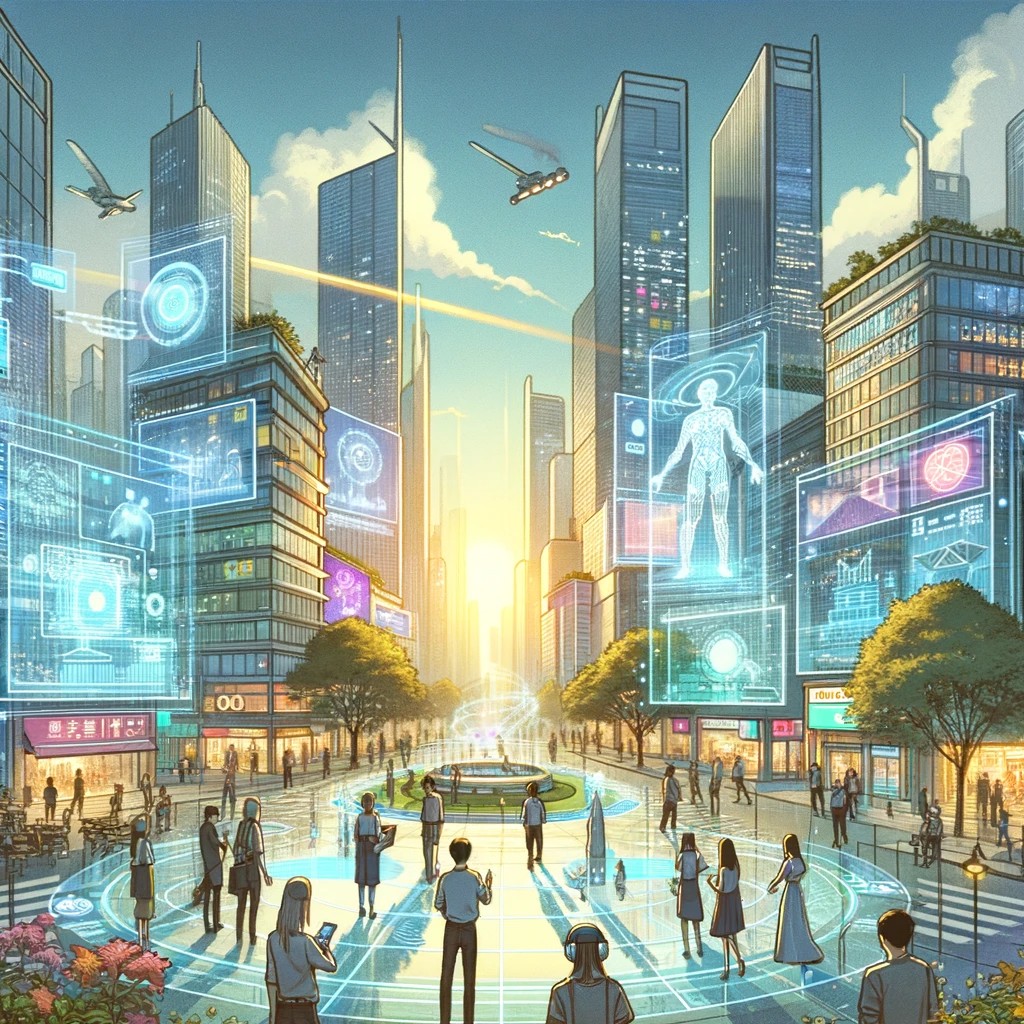In the buzzing realm of technology, where innovation takes center stage, the term “Spatial Computing” is emerging as the next frontier. Amidst the glitz and glam of the Consumer Electronics Show (CES), the tech world is abuzz with discussions on this evolutionary 3D-centric computing phenomenon. As Generative AI continues to captivate minds, spatial computing, in its nascent stage, steps into the limelight, promising a paradigm shift in how humans interact with technology. Let’s unravel the intricacies of spatial computing and explore why it’s poised to shape the future.
Decoding spatial computing – Perspectives from academic roots and tech innovators
In the academic landscape, spatial computing’s inception can be traced back to Simon Greenwold’s groundbreaking 2003 MIT master thesis. Greenwold defined spatial computing as a realm where human interaction with machines involves the retention and manipulation of references to real objects and spaces. This concept, initially introduced in academia, has found resonance in the tech industry, with major players providing their interpretations.
Apple, in its WWDC keynote, positioned spatial computing as a seamless blend of digital content with the physical world, showcasing a commitment to this evolving technology. Meta, through its Meta Quest 3 and smart glasses, entered the spatial computing arena, emphasizing its vision of blending AI and computer vision seamlessly. Microsoft, on the other hand, focuses on devices being aware of their surroundings, paving the way for novel human-robot interactions. AWS, with its emphasis on the combination of virtual and physical worlds, offers a distinct perspective on spatial computing’s potential.
What lies at the heart of spatial computing?
Spatial computing, at its essence, transcends conventional boundaries by leveraging AI, Computer Vision, and extended reality to seamlessly embed virtual experiences into the physical world. Picture any surface transforming into a spatial interface, breaking free from the confines of traditional screens. This transformative technology facilitates navigation through 3D spaces, marking the dawn of a new era in human-computer interaction. Spatial computing isn’t constrained to a singular technology or device; it’s a dynamic amalgamation of software, hardware, and information, fostering unprecedented connections between humans and technology.
Spatial computing’s promise lies in its ability to merge the virtual and physical seamlessly, offering an immersive experience beyond the limits of traditional interfaces. It signifies a shift from static devices to a world where technology seamlessly integrates with our physical surroundings, offering novel ways of communication and interaction.
The crucial role of spatial computing and its enabling tech convergence
Spatial computing transcends being a mere technological buzzword; it represents an evolving form of computing that merges our physical and virtual worlds, fundamentally transforming human-machine interactions. As Generative AI takes a step back, the tech industry is witnessing a surge in the race towards AI hardware and wearables. Pioneering companies like OpenAI and Meta are at the forefront, unveiling what could be the most advanced technology in consumer electronics.
Spatial computing, though in its infancy, is poised to permeate tech news and announcements, promising a transformative impact on how we engage with technology and each other. The convergence of AI, AR, VR, XR, and MR positions spatial computing as a cornerstone in the future of technology. The impending age of AI hardware, smart glasses, and spatial computing raises a crucial question: how will individuals shape this imminent future, and what role will they play in the unfolding narrative of this groundbreaking technological era?
As spatial computing takes its first steps into the spotlight at CES, the possibilities seem boundless. Will this 3D-centric computing revolutionize the way we work, learn, and interact? The convergence of AI, AR, VR, and other enabling technologies paints a picture of a future where digital and physical realms seamlessly intertwine. How will businesses adapt to this evolving landscape, and what role will spatial computing play in our daily lives? The answers lie in the hands of innovators and tech enthusiasts alike, as we navigate the uncharted territories of this groundbreaking technology.
From Zero to Web3 Pro: Your 90-Day Career Launch Plan
